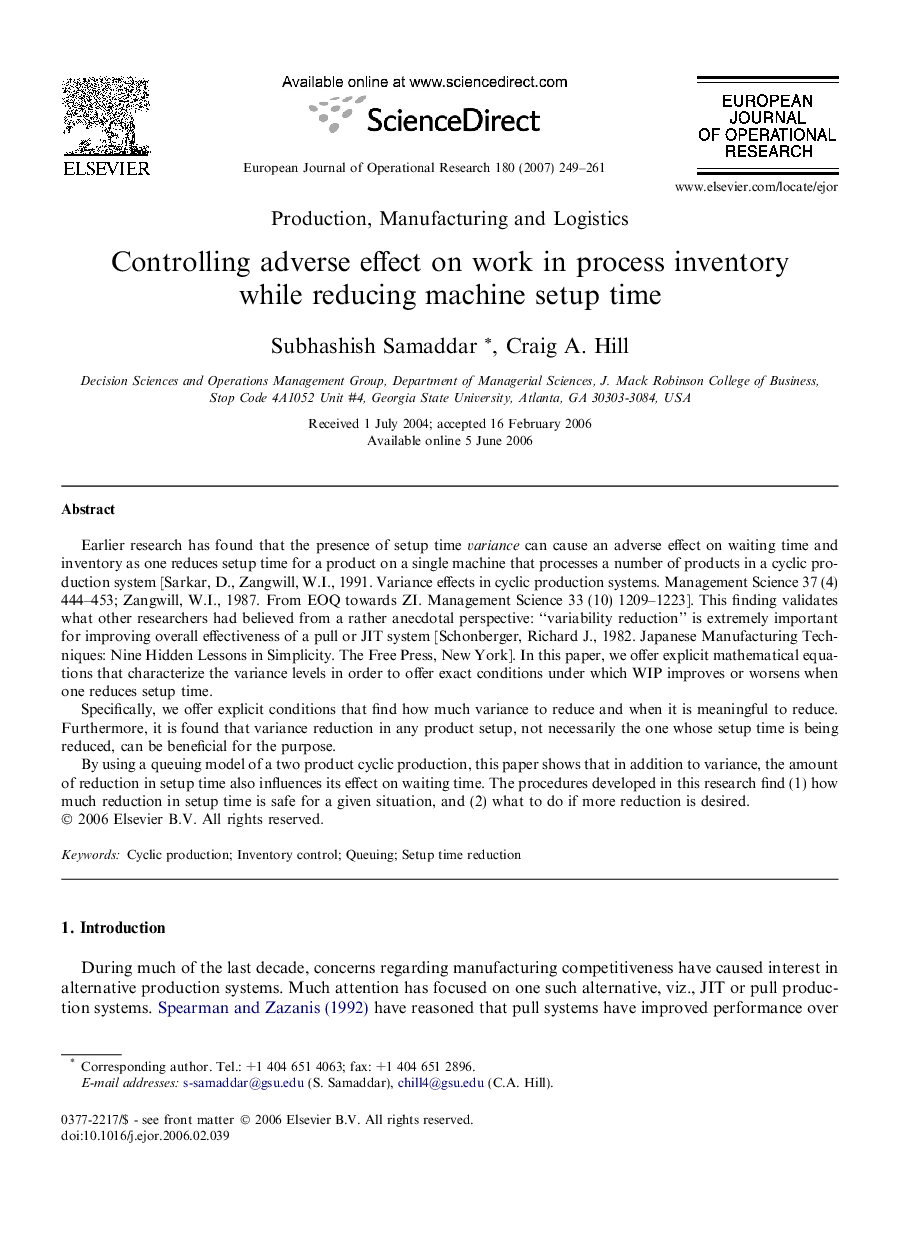| Article ID | Journal | Published Year | Pages | File Type |
|---|---|---|---|---|
| 477796 | European Journal of Operational Research | 2007 | 13 Pages |
Earlier research has found that the presence of setup time variance can cause an adverse effect on waiting time and inventory as one reduces setup time for a product on a single machine that processes a number of products in a cyclic production system [Sarkar, D., Zangwill, W.I., 1991. Variance effects in cyclic production systems. Management Science 37 (4) 444–453; Zangwill, W.I., 1987. From EOQ towards ZI. Management Science 33 (10) 1209–1223]. This finding validates what other researchers had believed from a rather anecdotal perspective: “variability reduction” is extremely important for improving overall effectiveness of a pull or JIT system [Schonberger, Richard J., 1982. Japanese Manufacturing Techniques: Nine Hidden Lessons in Simplicity. The Free Press, New York]. In this paper, we offer explicit mathematical equations that characterize the variance levels in order to offer exact conditions under which WIP improves or worsens when one reduces setup time.Specifically, we offer explicit conditions that find how much variance to reduce and when it is meaningful to reduce. Furthermore, it is found that variance reduction in any product setup, not necessarily the one whose setup time is being reduced, can be beneficial for the purpose.By using a queuing model of a two product cyclic production, this paper shows that in addition to variance, the amount of reduction in setup time also influences its effect on waiting time. The procedures developed in this research find (1) how much reduction in setup time is safe for a given situation, and (2) what to do if more reduction is desired.
